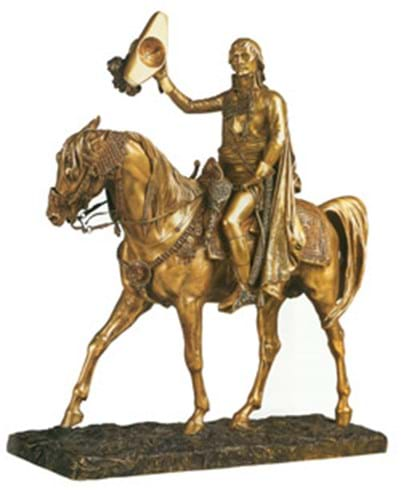
Confronted with the catalogues of Sotheby's 19th & 20th century European sculpture sale of May 29 in London and Millon & Associés' Orientalisme sale in Paris on May 19, you could be forgiven for thinking you're seeing double.
Both feature the striking image of Jean-Léon Gérôme's (1824-1904) Bonaparte Entering Cairo, his renowned bronze equestrian statuette. Both are bronze with gilt and coloured patina and are stamped on the plinth J.L Gérôme and SIOT. Fondeur Paris.
But whereas Millon's version is estimated at €20,000-30,000, Sotheby's expect theirs to fetch £200,000-300,000.
The crucial difference is size. Sotheby's imposing 2ft 9in (83cm) high piece is twice the size of Millon's 16in (41cm) version, making it one of only two known examples in the original large Salon size, the other being in the Palais du Senat in Paris.
Gérôme turned to sculpture late in life to great success, concentrating on similar subjects to those in his paintings, such as historical subjects, the Middle East, mythology and the ancient world.
He exhibited Bonaparte Entering Cairo at the Salon in 1897, when it was bought by the French Government for the Galerie du Luxembourg.
But, unusually, the state did not retain full rights to the reproduction as Gérôme had already agreed to make casts of the model with the Siot-Decauville foundry. The Minister condoned this on the condition that "the reproductions of the work make it possible not to confuse the copy with the original", thus the Siot edition was made half the size of the original.
Whilst the smaller Siot editions appear on the market fairly frequently, with varying patinas, the Salon-size version appearing at Sotheby's is something of a mystery. Consigned from a private French collection, it is not known why or for whom it was made, but Sotheby's speculate that it was probably made either as an unofficial bronze for Gérôme himself or was ordered by the state for an important occasion.
By Anna Brady




